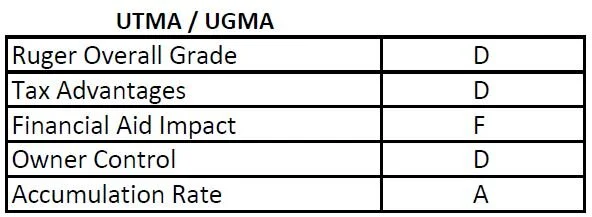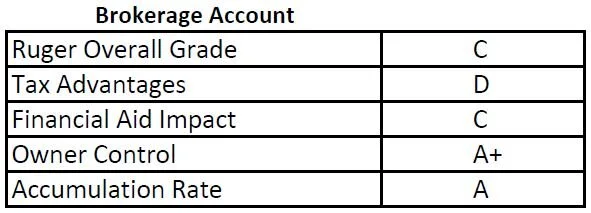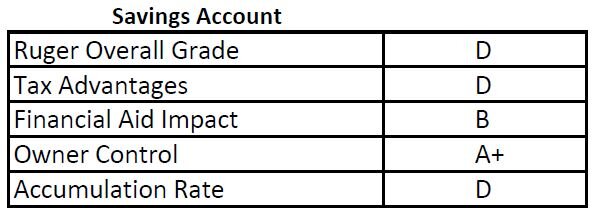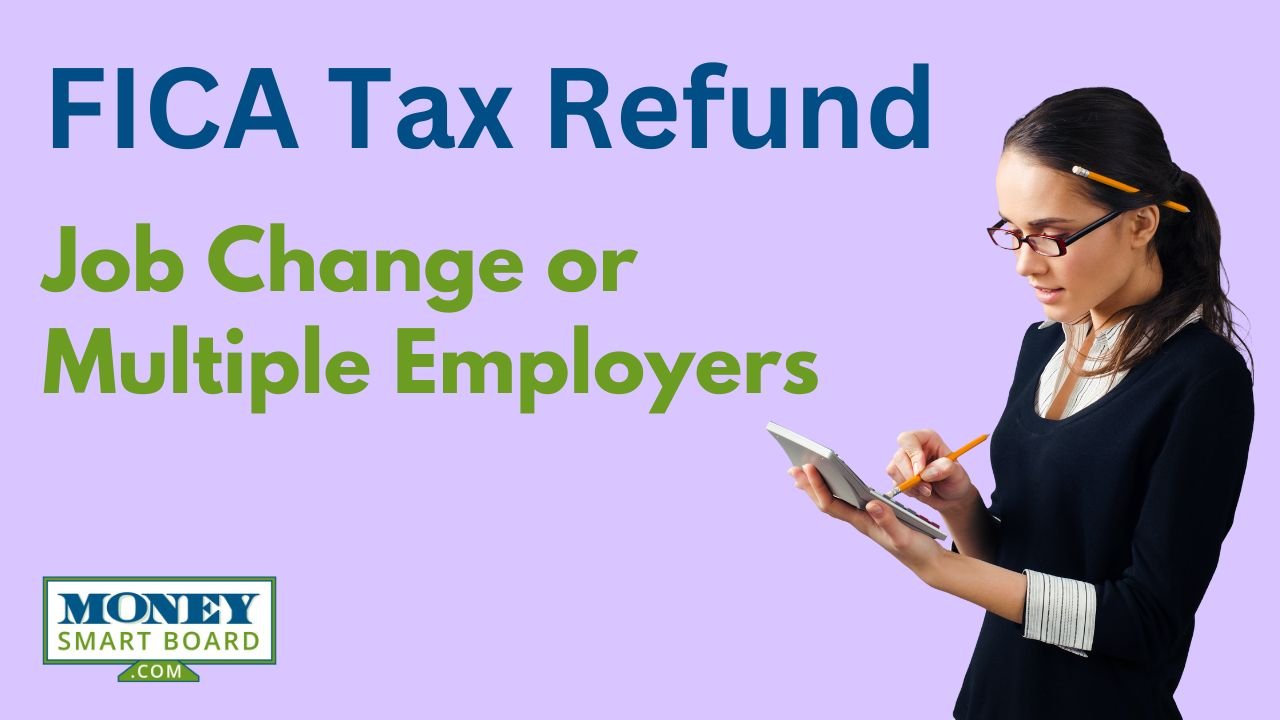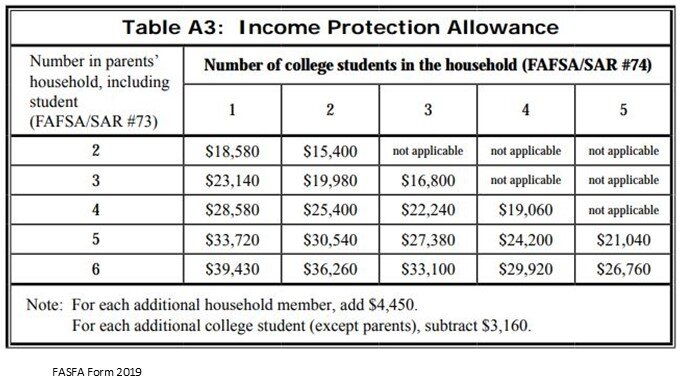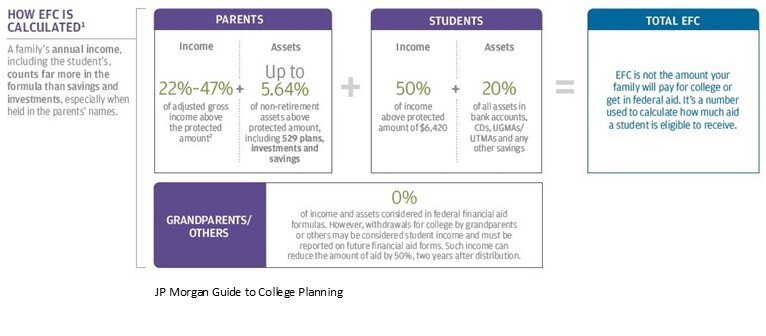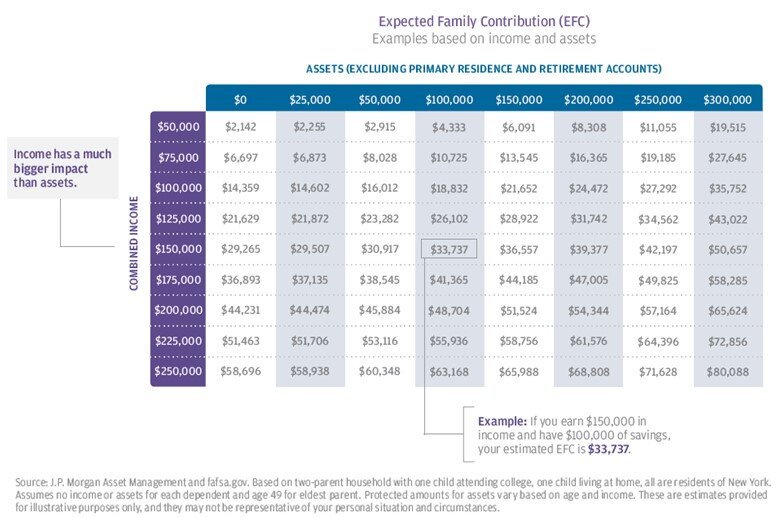
Big FAFSA Calculation & Application Changes Starting in 2023
Parents that are used to completing the FAFSA application for their children are in for a few big surprises starting in 2023. Not only is the FAFSA application being completely revamped but the FAFSA calculation itself is being changed which could result in substantially lower financial aid awards for many college-bound students.
Parents that are used to completing the FAFSA application for their children are in for a few big surprises starting in 2023. Not only is the FAFSA application being completely revamped but the FAFSA calculation itself is being changed which could result in substantially lower financial aid awards for many college-bound students.
FAFSA Application Delayed Until December 1st
In 2023, the FAFSA application will not become available for completion until December 1st. Normally the FAFSA application becomes available for completion on October 1st of each year but due to the changes that are being made to the application, software updates, and staff training, they have delayed the release of the FAFSA application for the 2024 – 2025 school year to December 1, 2023. This will reduce the window to time that parents have to submit the FAFSA application in 2023 so advanced preparation is advised.
A Simplified FAFSA Application
Completing the FAFSA application can be a very frustrating process; tons of questions, unclear wording as to what information FAFSA is actually asking parents to report, and you have to spend a lot of time collecting all of your personal financial documents that are needed to enter the information on the FAFSA application.
Fortunately, in 2020, Congress passed the FAFSA Simplification Act which will greatly simplify the FAFSA application in 2023 and years going forward. The old FAFSA application contained 108 questions, the new FAFSA application is only expected to contain 36 questions. In addition to cutting the questions in half, the wording of many of the questions will be amended to make it easier to understand how to report your financial assets. Two very welcome changes to the application.
EFC (Expected Family Contribution) Calculation Removed
In the past, completing the FAFSA application has resulted in an Expected Family Contribution (EFC) amount which is meant to provide a ballpark amount that a family may have to pay out of pocket before need-based financial aid is awarded to a student. The term EFC can be misleading because it’s not necessarily the hard dollar amount that parents will be required to pay out of pocket but rather it’s the family’s financial need relative to other applicants.
To remove this confusion, EFC will now be replaced by SAI (Student Aid Index), so now after parents complete the FAFSA application, it will result in an SAI amount.
Financial Aid Awards Reduced For Multiple Children
Parents that have multiple children in college at the same time may be in for an unfortunate surprise when they see the results of the new SAI calculation. In the past, if a parent completed the FAFSA application and it resulted in an EFC of $30,000, but they had two children in college at the same time, FAFSA would split the $30,000 between the two children, $15,000 each, which would potentially make each student eligible for a higher financial aid award.
Starting the 2024 – 2025 school year, FAFSA will no longer be providing this EFC (SAI) split for multiple children in college. If the FAFSA calculation results in a $30,000 SAI, that $30,000 will now apply to EACH student, instead of being split equally between each child, which could result in lower need-based financial aid awards going forward.
Divorced Parents FAFSA Calculation Change
When parents are divorced, and they have a child attending college, the custodial parent is the parent that submits the FAFSA application based on their income and assets. Historically, the FAFSA definition of the “custodial parent” was the parent that the child lived with for the majority of the 12-month period ending on the day the FAFSA application is filed. This often times created a very favorable financial aid award if the child was living for a majority of the year with the parent that had lower income and assets.
In 2023, for the 2024 – 2025 school year and years going forward, this is changing. The new FAFSA rules require the parent who provided the most financial support in the “prior-prior” tax year to complete the FAFSA application instead of the custodial parent. Prior-prior refers to the tax year 2 years ago from the beginning of the college semester. For the 2024 – 2025 award year, FAFSA would be looking at the 2022 tax year for this determination.
For example, Joe and Sue got divorced 5 years ago, and their daughter Mary is currently a sophomore in college. Sue is a homemaker, Mary lives with her mother for the majority of the year, Joe makes $300,000 per year, and pays Sue $25,000 per year in child support and $40,000 per year in alimony. For the 2023 – 2024, under the old FAFSA calculation, Sue was considered the custodial parent, and completed the FAFSA form using her annual income and assets. Since Joe is not the custodial parent, Joe’s income and assets are ignored for purposes of FAFSA.
For the 2024 – 2025 school year, under the new rules, that would now change. Since Joe is providing a majority of the financial support via child support and alimony payments, Joe would now be the parent required to submit the FAFSA application based on his income and assets. Since Joe’s income is substantially higher than Sue’s, it could result in a much lower college financial aid award.
There has been some initial guidance, that if there is a “tie” as to which parent provided the majority of the financial support, the ties are broken based on whichever parent has the higher adjusted gross income.
Changes to Pell Grants
One of the largest sources of need-based financial aid from the federal government is awarded via Pell Grants. For the 2024 – 2025 school year, the maximum Pell Grant amount has been increased but they have changed how the Pell Grant is calculated. The Pell Grant takes into account both the SAI result (new EFC) and the applicant’s adjusted gross income. Since the calculation of the SAI has changed, for reasons that we have already discussed, it could impact the amount of the Pell Grants awarded to students.
As a new benefit, parents will now be able to determine if their child will be eligible for a Pell Grant award based on income and family size before they even complete the FAFSA form.
Grandparent 529 Penalty Removed
A positive change that they made was eliminating the restriction associated with distributing money from a 529 account owned by a grandparent for the benefit of the grandchild. Previously, if distributions were made from a grandparent owned 529 accounts, those distributions were considered “income of the student” in the FAFSA calculation, which could dramatically reduce the financial aid awards in future years. The new legislation removed this restriction and made grandparent owned 529 accounts even more valuable than they were prior to this change.
Income Protection Allowance Increased
The FAFSA calculation has income thresholds that exclude specific amounts of income of both the parents and the child in the calculation of the Student Aid Index. Those income exclusion allowances have been increased starting in the 2024 – 2025 school year. For example, the income allowance for students for the 2023 – 2024 school year was $7,040, meaning a student could earn up to $7,040 without their income factoring into the FAFSA calculation. For the 2024 – 2025 school year, the student income allowance will be $9,410.
The income protection allowance for parents will be increased by about 20%.
About Michael……...
Hi, I’m Michael Ruger. I’m the managing partner of Greenbush Financial Group and the creator of the nationally recognized Money Smart Board blog . I created the blog because there are a lot of events in life that require important financial decisions. The goal is to help our readers avoid big financial missteps, discover financial solutions that they were not aware of, and to optimize their financial future.
College Savings Account Options
There are a lot of different types of accounts that you can use to save for college. But, certain accounts have advantages over others such as:
· Tax deductions for contributions
· Tax free accumulation and withdrawal
· The impact on college financial aid
· Who has control over the account
· Accumulation rate
The types of college savings account that I will be covering in this article are:
· 529 accounts
· Coverdell accounts (also know as ESA’s)
· UTMA / UGMA accounts
· Brokerage Accounts
· Savings Accounts
To make it easy to compare and contrast each option, I will have a grading table at the beginning of each section that will provide you with some general information on each type of account, as well as my overall grade on the effectiveness of each college saving option.
529 Plans
I’ll start with my favorite which are 529 College Savings Plan accounts. As a Financial Planner, I tend to favor 529 accounts as primary college savings vehicles due to the tax advantages associated with them. Many states offer state income tax deductions for contributions up to specific dollar amounts, so there is an immediate tax benefit. For example, New York provides a state tax deduction for up to $5,000 for single filers, and $10,000 for joint filers for contributions to NYS 529 accounts year. There is no income limitation for contributing to these accounts.
NOTE: Every now and then I come across individuals that have 529 accounts outside of their home state and they could be missing out on state tax deductions.
However, the bigger tax benefit is that fact that all of the investment returns generated by these accounts can be withdrawn tax free, as long as they are used for a qualified college expense. For example, if you deposit $5K into a 529 account when your child is 2 years old, and it grows to $15,000 by the time they go to college, and you use the account to pay qualified expenses, you do not pay tax on any of the $15,000 that is withdrawn. That is huge!! With many of the other college savings options like UTMA or brokerage accounts, you have to pay tax on the gains.
There is also a control advantage, in that the parent, grandparent, or whoever establishes the accounts has full control as to when and how much is distributed from the account. This is unlike UTMA / UGMA accounts, where once the child reaches a certain age, the child can do whatever they want with the account without the account owner’s consent.
A 529 account does count against the financial aid calculation, but it is a minimal impact in most cases. Since these accounts are typically owned by the parents, in the FAFSA formula, 5.6% of the balance would count against the financial aid reward. So, if you have a $50,000 balance in a 529 account, it would only set you back $2,800 per year in financial aid.
I gave these account an “A” for an accumulation rating because they have a lot of investment option available, and account owners can be as aggressive or conservative as they would like with these accounts. Many states also offer “age based portfolios” where the account is allocated based on the age of the child, and when the will turn 18. These portfolios automatically become more conservative as they get closer to the college start date.
The contributions limits to these accounts are also very high. Lifetime contributions can total $400,000 or more (depending on your state) per beneficiary.
Coverdell Accounts (Education Savings Accounts)
Coverdell accounts have some of the benefits associated with 529 accounts, but there are contribution and income restrictions associated with these types of accounts. First, as of 2021, only taxpayers with adjusted gross income below $110,000 for single filers and $220,000 for joint filers are eligible to contribute to Coverdell accounts.
The other main limiting factor is the contribution limits. You are limited to a $2,000 maximum contribution each year until the beneficiary’s 18th birthday. Given the rising cost of college, it is difficult to accumulate enough in these accounts to reach the college savings goals for many families. Similar to 529 accounts, these accounts are counted as an asset of the parents for purposes of financial aid.
The one advantage these accounts have over 529 accounts is that the balance can be used without limitations for qualified expenses to an elementary or secondary public, private, or religious school. The federal rules recently changed for 529 accounts allowing these types of qualified withdrawal, but they are limited to $10,000 and depending on the state you live in, the state may not recognize these as qualified withdrawals from a 529 account.
If there is money left over in these Coverdell account, they also have to be liquidated by the time the beneficiary of the account turns age 30. 529 accounts do not have this restriction.
UTMA & UGMA Accounts
UGMA & UTMA accounts get the lowest overall grade from me. With these accounts, the child is technically the owner of the account. While the child is a minor, the parent is often assigned as the custodian of the account. But once the child reaches legal age, which can be 18, 19, or 21, depending on the state you live in, the child is then awarded full control over the account. This can be a problem when your child decides at age 18 that buying a Porsche is a better idea than spending that money on college tuition.
Also, because these accounts are technically owned by the child, they are a wrecking ball for the financial aid calculation. As I mentioned before, when it is an asset of the parent, 5.6% of the balance counts against financial aid, but when it is an asset of the child, 20% of the account balance counts against financial aid.
There are no special tax benefits associated with UTMA and UGMA accounts. No tax deductions for contributions and the child pays taxes on the gains.
Unlike 529 and Coverdell accounts, where you can change the beneficiary list on the account, with UTMA and UGMA accounts, the beneficiary named on the account cannot be changed.
Brokerage Accounts
Parents can use brokerage accounts to accumulate money for college instead of the cash sitting in their checking account earning 0.25% per year. The disadvantage is the parents have to pay tax on all of the investment gains in the account once they liquidate them to pay for college. If the parents are in a higher tax bracket, they could lose up to 40%+ of those gains to taxes versus the 529 accounts where no taxes are paid on the appreciation. But, it also has the double whammy that if the parents realize capital gains from the liquidation, their income will be higher in the FAFSA calculation two years from now.
Sometimes, a brokerage account can complement a 529 account as part of a comprehensive college savings strategy. Many parents do not want to risk “over funding” a 529 account, so once the 529 accounts have hit a comfortable level, they will begin contributing the rest of the college savings to a brokerage account to maintain flexibility.
Savings Accounts
The pros and cons of a savings account owned by the parent or guardian of the child will have similar pros and cons of a brokerage account with one big drawback. Last I checked, most savings accounts were earning under 1% in interest. The cost of college since 1982 has increased by 6% per year (JP Morgan College Planning Essentials 2021). If the cost of college is going up by 6% per year, and your savings is only earning 1% per year, even though the balance in your savings account did not drop, you are losing ground to the tune of 5% PER YEAR. By having your college savings accounts invested in a 529, Coverdell, or brokerage account, it will at least provide you with the opportunity to keep pace with or exceed the inflation rate of college costs.
Can The Cost of College Keep Rising?
Let’s say the cost of attending college keeps rising at 6% per year, and you have a 2-year-old child that you want to send to state school which may cost $25,000 per year today. By the time they turn 18, it would cost $67,000 PER YEAR, times 4 years of college, which is $268,000 for a bachelor’s degree! The response I usually get when people hear these number is “there is no way that they can allow that to happen!!”. People were saying that 10 years ago, and guess what? It happened. This is what makes having a solid college savings strategy so important for your overall financial plan.
NOTE: As Financial Planners, we are seeing a lot more retirees carry mortgages and HELOC’s into retirement and the reason is usually “I helped the kids pay for college”.
About Michael……...
Hi, I’m Michael Ruger. I’m the managing partner of Greenbush Financial Group and the creator of the nationally recognized Money Smart Board blog . I created the blog because there are a lot of events in life that require important financial decisions. The goal is to help our readers avoid big financial missteps, discover financial solutions that they were not aware of, and to optimize their financial future.
DISCLOSURE: This material is for informational purposes only. Neither American Portfolios nor its Representatives provide tax, legal or accounting advice. Please consult your own tax, legal or accounting professional before making any decisions. Any opinions expressed in this forum are not the opinion or view of American Portfolios Financial Services, Inc. and have not been reviewed by the firm for completeness or accuracy. These opinions are subject to change at any time without notice. Any comments or postings are provided for informational purposes only and do not constitute an offer or a recommendation to buy or sell securities or other financial instruments. Readers should conduct their own review and exercise judgment prior to investing. Investments are not guaranteed, involve risk and may result in a loss of principal. Past performance does not guarantee future results. Investments are not suitable for all types of investors. Investment advisory services offered through Greenbush Financial Group, LLC. Greenbush Financial Group, LLC is a Registered Investment Advisor. Securities offered through American Portfolio Financial Services, Inc (APFS). Member FINRA/SIPC. Greenbush Financial Group, LLC is not affiliated with APFS. APFS is not affiliated with any other named business entity. There is no guarantee that a diversified portfolio will enhance overall returns or outperform a non-diversified portfolio. Diversification does not ensure against market risk. The opinions voiced in this material are for general information only and are not intended to provide specific advice or recommendations for any individual. To determine which investments may be appropriate for you, consult your financial advisor prior to investing. All performance referenced is historical and is no guarantee of future results. All indices are unmanaged and cannot be invested into directly. Guarantees apply to certain insurance and annuity products (not securities, variable or investment advisory products) and are subject to product terms, exclusions and limitations and the insurer's claims-paying ability and financial strength. Before investing, consider the investment objectives, risks, charges, and expenses of the annuity and its investment options. Please submit using the same generated coversheet for this submission number. Potential investors of 529 plans may get more favorable tax benefits from 529 plans sponsored by their own state. Consult your tax professional for how 529 tax treatments and account fees would apply to your particular situation. To determine which college saving option is right for you, please consult your tax and accounting advisors. Neither APFS nor its affiliates or financial professionals provide tax, legal or accounting advice. Please carefully consider investment objectives, risks, charges, and expenses before investing. For this and other information about municipal fund securities, please obtain an offering statement and read it carefully before you invest. Investments in 529 college savings plans are neither FDIC insured nor guaranteed and may lose value.
Understanding FAFSA & How To Qualify For More College Financial Aid
As the cost of college continues to rise, so does the financial stress that it puts on families trying to determine the optimal solution to pay for college. It’s never been more important for parents and family members of these students
As the cost of college continues to rise, so does the financial stress that it puts on families trying to determine the optimal solution to pay for college. It’s never been more important for parents and family members of these students to understand:
How is college financial aid calculated?
Are there ways to increase the amount of financial aid you can receive?
What are the income and asset thresholds where financial aid evaporates?
Understanding the FAFSA 2 Year Lookback Rule
The difference between financial aid at public colleges vs private colleges
In this article we will provide you with guidance on these topics as well as introduce strategies that we as financial planners use with our clients to help them qualify for more financial aid.
How is college financial aid calculated?
Too often we see families jump to the incorrect assumption that “I make too much to qualify for financial aid.” Depending on what your asset and income picture looks like there may be strategies that will allow you to shift assets around during the financial aid determination years to qualify for need based financial aid. But you first need to understand how need based financial aid is calculated.
The Department of Education has a formula to calculate your “Expected Family Contribution” (EFC). The Expected Family Contribution is the amount that a family is expected to pay out of pocket each year before financial aid is awarded. Here is the general formula for financial aid:
It’s pretty simple and straight forward. Cost of the college, minus the EFC, equals the amount of your financial aid award. Now let’s breakdown how the EFC is calculated
Expected Family Contribution (EFC) Calculation
Both the parent’s income and assets, as well as the student’s income and assets come into play when calculating a family’s EFC. But they are weighted differently in the formula. Let’s look at the parent’s income and assets first.
Parent’s Income & Assets
Parents Income: The parent’s income is one of the largest factors in the EFC calculation. The percentage of the parents income that counts toward the EFC calculation is expressed as a range between 22% - 47% because it depends on a number of factors such as household size and the number of children that you have attending college at the same time.
However, there is an “Income Protection Allowance” that allows parents to shelter a portion of their income from the formula based on the household size and the number of children attending college. See that chart below for the 2019-2020 FAFSA form:
Parents Assets: Any assets owned by the parents of the student are multiplied by 5.64% and that amount counts towards the EFC. Here are a few assets that are specifically EXCLUDED from this calculation:
Retirement Accounts: 401(k), 403(b), IRA’s, SEP, Simple
Pensions
Primary Residence
Family controlled business (less than 100 employees and 51%+ ownership by parents)
On the opposite side of that coin, here is a list of some assets that are specifically INCLUDED in the calculation:
Balance in 529 accounts
Real estate other than the primary residence
Even if held in an LLC – Reported separately from “business assets”
Non-retirement investment accounts, savings account, CD’s
Trusts where the student is a beneficiary of the trust (even if not entitled to distributions yet)
Business interest (less than 51% family owned by parents or more than 100 employees)
Similar to the Income Allowance Table, there is also a Parents’ Asset Protection Allowance Table that allows them to shelter a portion of their countable assets from the EFC formula. See the table below for the 2019-2020 school year.
Student’s Income & Assets
Now let’s switch gears over to the student side of the EFC formula. The income and the assets of the student are weighted differently than the parent’s income and assets. Here is the student side of the EFC formula:
As you can clearly see, income and assets in the student’s name compared to the parent name will dramatically increase the Expected Family Contribution and in turn decrease the amount of financial aid awarded. It is because of this, that as a general rule, if you think your asset and income picture may qualify you for financial aid, do not put assets in the name of your child. The most common error that we see people make are assets in an UGMA or UTMA account. Even though parents control those accounts, they are technically considered an asset of the child. If there is $30,000 sitting in an UTMA account for the student, they are automatically losing around $6,000 EACH YEAR in financial aid. Multiply that by 4 years of college, it ends up costing the family $24,000 out of pocket that otherwise could have been covered by financial aid.
EFC Formula Illustration
If we put all of the pieces together, here is an illustration of the full EFC Formula:
Grandparent Owned 529 Plans For The Student
As you will see in the EFC formula above, assets owned by the grandparents with the student listed as the beneficiary, like 529 accounts, are not counted at all toward the EFC calculation. This can be a very valuable college savings strategy for families since the parent owned 529 accounts count toward the Expected Family Contribution. However, there are some pitfalls and common mistakes that we have seen people make with regard to grandparent owned 529 accounts. See the article below for more information specific to this topic:
Article: Common Mistakes With Grandparent Owned 529 Accounts
Financial Aid Chart
Our friends over at JP Morgan were kind enough to put a summary chart together for this EFC calculation which allows families to get a ballpark idea of what their Expected Family Contribution might be without getting out a calculator. The chart below is based on the following assumptions:
Two parent household
2 Children: One attending college and the other still at home
The child attending college has no assets or income
The oldest parent is age 49
Using the chart above, if the parents combined income is $150,000 and they have $100,000 in countable assets, the Expected Family Contribution would be $33,737 for that school year. What does that mean? If the student is attending a state college and the tuition with room and board is $26,000, since the EFC is greater than the total cost of college for that year, that family would receive no financial aid. However, if that student applies to a private school and the CSS Profile form results in approximately that same EFC of $33,737 but the private school costs $60,000 per year, then the family may receive need based financial aid or a grant from the private school equaling $26,263 per year.
Public Colleges vs. Private Colleges
It’s important to point out that FAFSA and the EFC calculation primarily applies to students that plan on attending a Community College, State College, or certain Private Colleges. Since Private Colleges do not receive federal financial aid they do not have to adhere to the EFC calculation that is used by FAFSA. Private college can choose to use to FAFSA criteria but many of the private colleges will require students to complete both the FAFSA form and the CSS Profile Form.
Here are a few examples of how the financial reporting deviates:
If the parents have a 100% family owned business, they would not have to list that as an asset on the FAFSA application but they would have to list the business as an assets on the CSS Profile form.
The equity in your primary residence is not counted as an asset for FAFSA but it is listed as an asset on the CSS Profile Form.
For parents that are divorced. FAFSA only looks at the assets and income of the custodial parent. The CSS Profile Form captures the assets and income of both the custodial and non-custodial parent.
Because of the deviations between the FAFSA application and the CSS Profile Form, we have seen situations where a student received no need based financial aid when applying to a $50,000 per year private school but they received financial aid for attending a state school even though the annual cost to attend the state school was half the cost of the private school.
Top 10 Ways To Increase College Financial Aid
Here is a quick list of the top strategies that we use to help families to qualify for more financial aid.
Disclosure: There are details associated with each strategy listed below that need to be executed correctly in order for the strategy to have a positive impact on the EFC calculation. Not all strategies will work depending on the financial circumstances of each household and where the child plans to attend college. Contact us for details.
Get assets out of the name of the student
Grandparent owned 529 accounts
Use countable assets of the parents to pay down debt
Move UTGMA & UGMA accounts to 529 UGMA or 529 UTMA accounts
Increase contributions to retirement accounts
Minimize distributions from retirement accounts
Minimize capital gain and dividend income
Accelerate necessary expenses
Use home equity line of credit instead of home equity loan
Families that own small businesses have a lot of advanced planning options
FAFSA – 2 Year Lookback
It’s important to understand the FAFSA application process because you have know when they take the snapshot of your income and assets for the EFC calculation in order to have a shot at increasing the financial aid that you may be able to qualify for.
FAFSA looks back 2 years to determine what your income will be for the upcoming school year. For example, if your child is going to be a freshman in college in the fall of 2020, you will report your 2018 income on the FAFSA application. This is important because you have to start putting some of these strategies into place in the spring of your child’s sophomore year in high school otherwise you could miss out on planning opportunities for their freshman year in college.
If your child is already a junior or senior in high school and you are just reading this article now, there is still an opportunity to implement some of the strategies listed above. Income has a 2 year lookback but assets are reported as of the day of the application. Also the FAFSA application is completed each year that your child is attending college, so even though you may have missed income reduction strategies for their freshman year, at some point the 2 year lookback will influence the financial aid picture during the four years of their undergraduate degree.
IMPORTANT NOTE: Income has a 2-year lookback
Asset balances are determined on the day that you submit the FAFSA Application
About Michael……...
Hi, I’m Michael Ruger. I’m the managing partner of Greenbush Financial Group and the creator of the nationally recognized Money Smart Board blog . I created the blog because there are a lot of events in life that require important financial decisions. The goal is to help our readers avoid big financial missteps, discover financial solutions that they were not aware of, and to optimize their financial future.






























